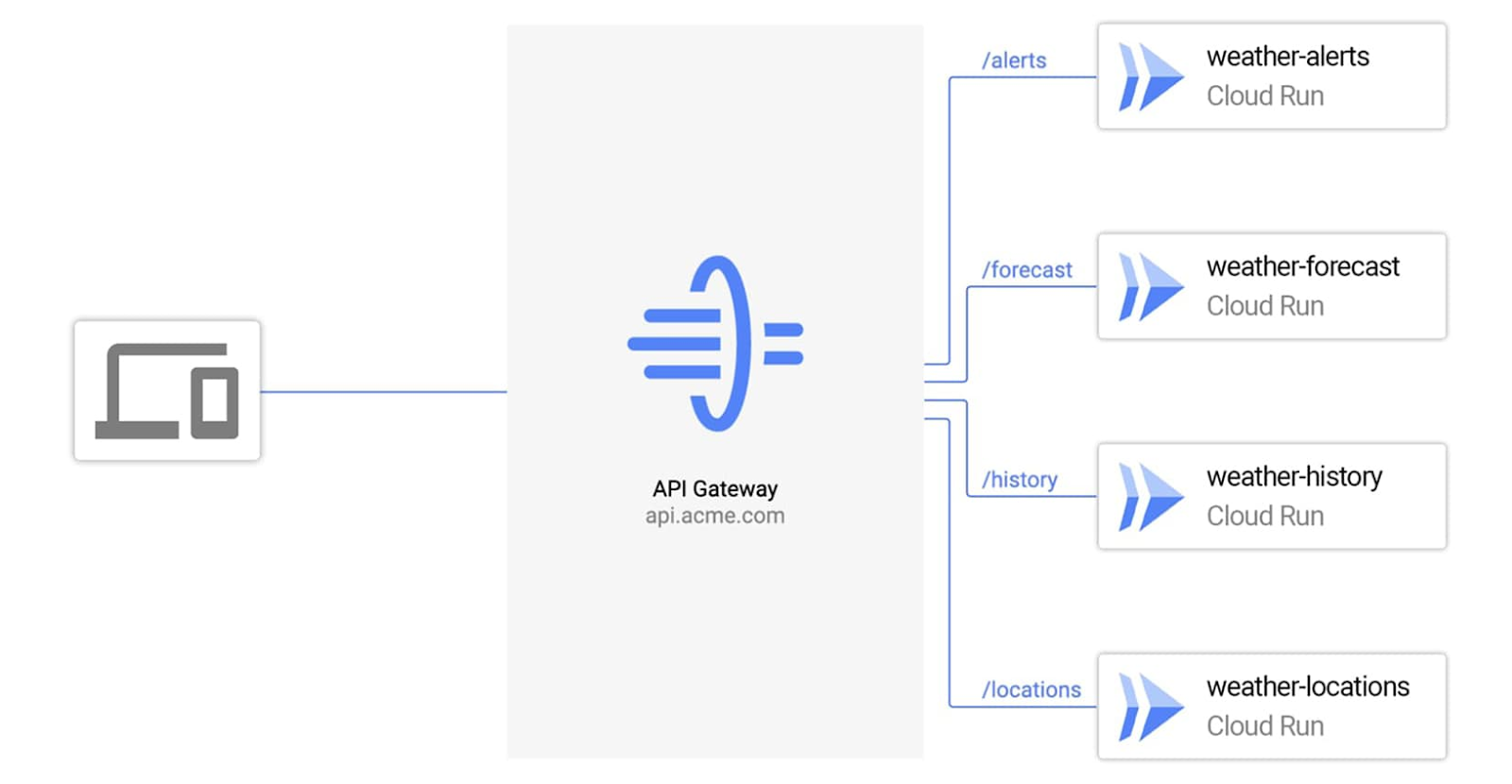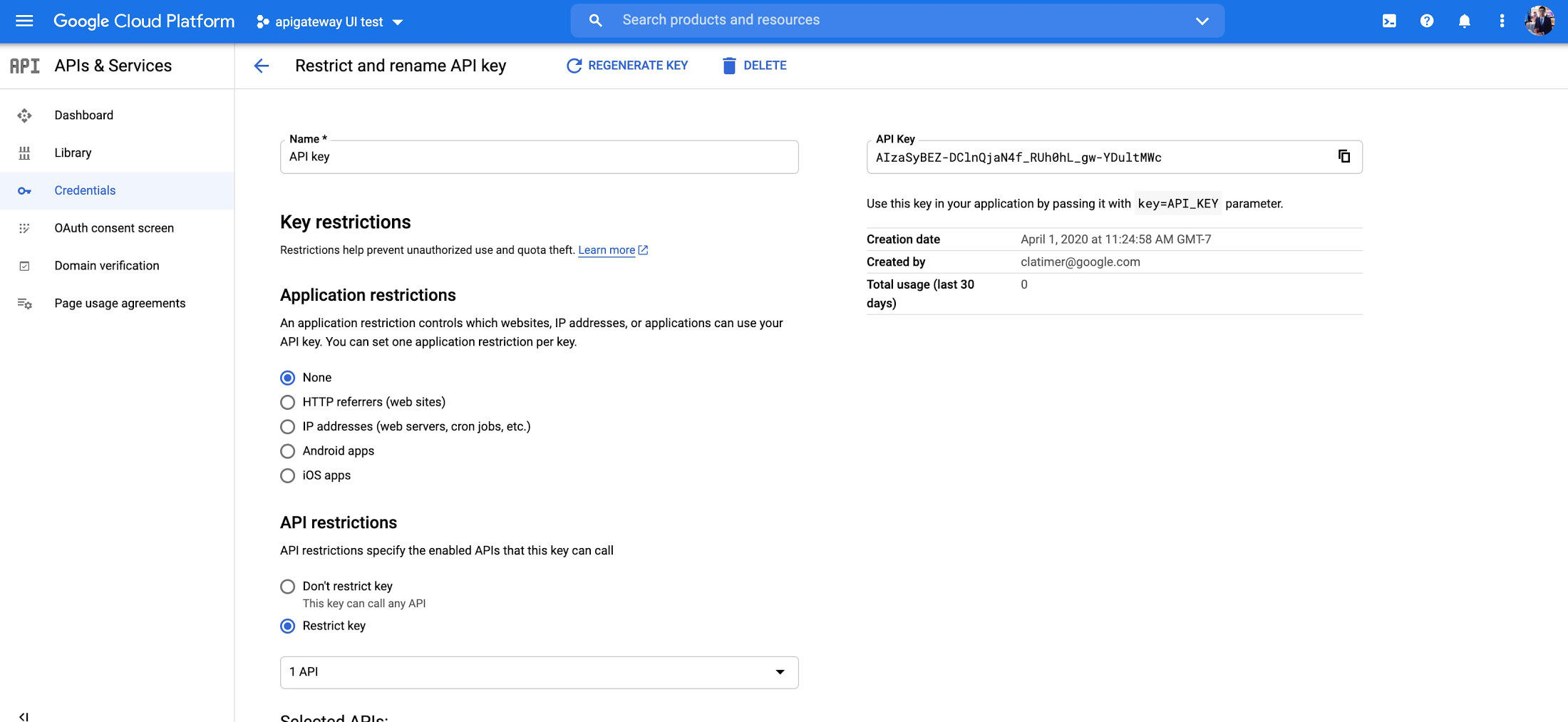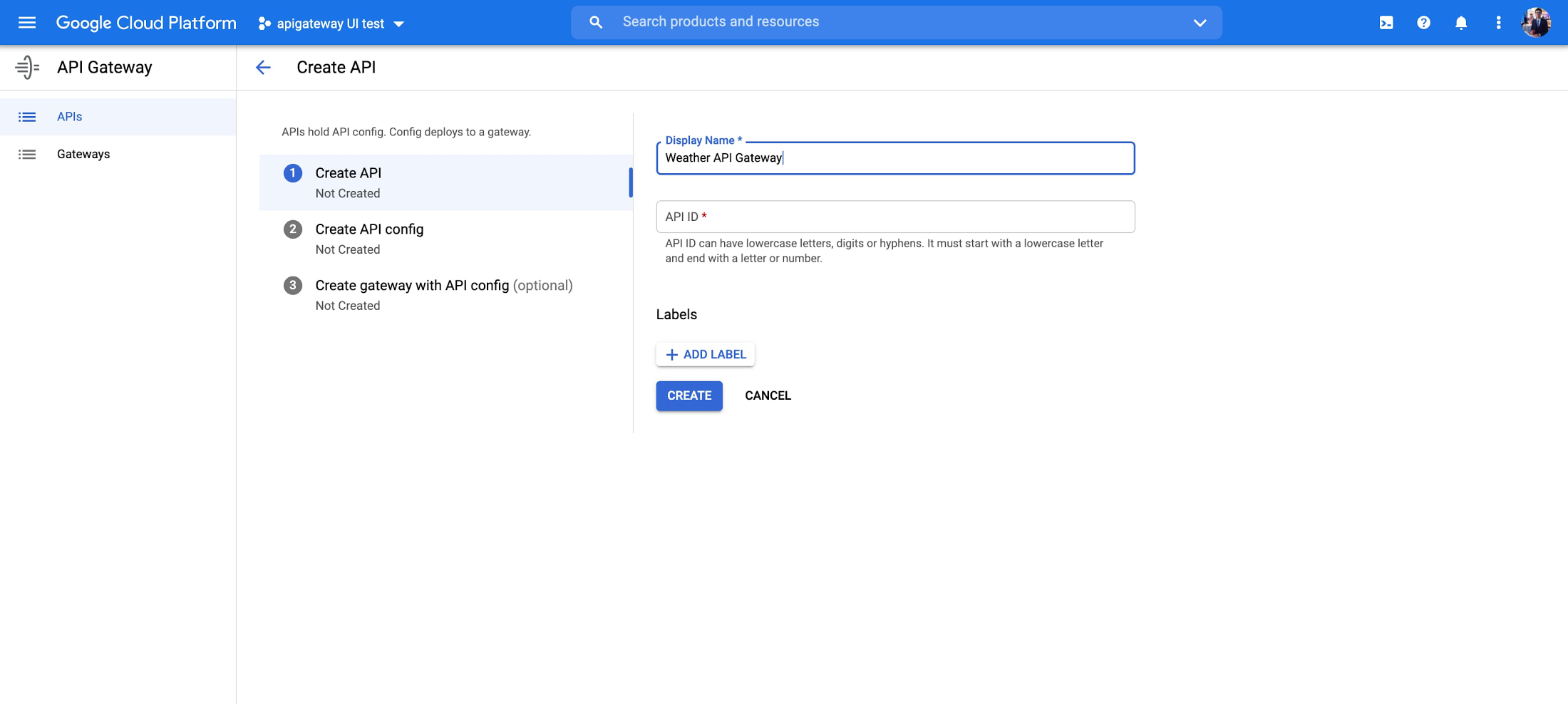We see developers increasingly adopting serverless capabilities that allow them to concentrate on application code and testing, without worrying about infrastructure set up and scaling. By incorporating serverless architectures and best practices, developers are able to deliver world-class applications and services faster to customers as digital becomes the first and most preferred choice of interacting with businesses.
We also see developers increasingly packaging serverless workloads as easy-to-use APIs in order to share them with other teams or publicly over the web. Developers often package serverless functions as APIs for security, analytics and monitoring purposes.
Today, to help developers focus on building code without having to worry about the underlying infrastructure, we are excited to announce the beta of API Gateway—a fully-managed Google Cloud offering that lets you create, secure, and monitor APIs for your serverless workloads. API Gateway is built on Envoy, giving you high performance and scalability with both consumption-based and tiered pricing options to help you manage cost.
“The API Gateway makes easy work out of managing all the API calls to our serverless backends. We had challenges with scaling and consolidation of different API call types prior to implementing the API Gateway. Not only have we resolved issues, but we’ve experienced a 10x improvement in API management by using a single platform that is easily accessible through the cloud console and fully managed by Google Cloud.” – Fabian Seitz, Technical Product Manager, Data Access, MediaMarktSaturn
Let’s take a deeper dive into the new API Gateway.
Single interface for multiple services

Breaking up functionality into multiple services is great for developers because it adds flexibility of deployment and scale. However, it can add a lot of complexity for API consumers, as they have no way of knowing which service to use to access the functionality they are looking for. Using the new API Gateway, developers can easily package multiple services into easy-to-use APIs while making it easy for consumers to access through a single interface. For example, a company that focuses on weather data may build capabilities for weather alerts, forecasting, history, and locations as four different services. But with an API Gateway, end-users can just use a weather API to access all of these services through a single access point.
Secure APIs with ease

To improve developer efficiency and shorten time-to-market, many organizations share reusable services and components within and outside their teams, including potentially with external developer communities. Externalizing services can introduce them to new users and increase the scope of innovation around them—but it also opens more doors for abuse and bot attacks. Therefore, it’s extremely important to secure services via APIs. API Gateway adds additional layers of security, such as authentication and key validation, by configuring security definitions that require all incoming calls to provide a valid API key. It also allows you to set quotas and specify usage limits to protect your APIs from abuse or excessive usage.
Keep the focus on building great applications

API Gateway gives you all the operational benefits of serverless, such as flexible deployment and scalability, so that you can focus on building great applications. It can manage APIs for multiple backends including Cloud Functions, Cloud Run, App Engine, Compute Engine, and Google Kubernetes Engine.
Getting Started
Check out the documentation and go to the console to start using the beta of API Gateway. Click here to learn more about API Gateway and pricing details.

